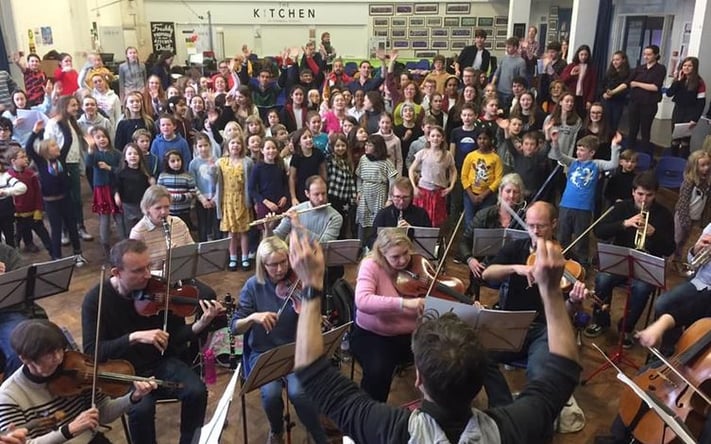The Bartered Bride, the most celebrated of Smetana's eight operas, involves a young man bartering away his love interest for the princely-ish sum of 700 florins and comprises an unfeasible dollop of rank melodrama and coincidence. After a muted start, the violins having a kind of poking-out in low register, there comes a series of merry unison thrusts, frequently vivacissimo. I don't know that these musical lollipops kicking off a concert programme are much more than a bow to tradition. Of course they warm up the fingers of the strings, and in this case the programme's one of Eastern European music.
Rachmaninov's Second Piano Concerto was composed after a period of depression, and he went at it back-to-front: first the third movement and so on. Soloist Craig Greene brought out slowly but with great emphasis the lugubrious procession of eight chords serving as prelude to the first theme's surging cortège. The waves of crescendos and decrescendos must have kept a small army of Russian typographers busy for a week, but at times in this movement the balance of sound was not quite right. St Mary the Virgin with its oh-so-lofty, starry ceiling yawning above the musicians has tricky acoustics, and hereabouts at times the piano was rather elbowed out by Ben Winters' exuberant orchestra, numbering upwards of 40 despite its name.
In the adagio, the flute, followed by clarinet, sets the melody and the piano part falls into line, but thereafter the piano assumes ever-greater ascendancy. Greene has an attractive way, both visually and aurally, of stroking rather than hitting the right-hand keys when crossing his hands; and I also enjoyed the moment where he kept the last note of the adagio ringing out by means of the damper pedal. His quicksilver fingering in the finale was accomplished coolly, and then during the brilliant coda he played with marvellous fervour.
He told me afterwards that owing to pressure of work he had, until the rehearsal, not sat down at the piano since the previous Sunday; surprising enough, but even more surprising – and gratifying – was the sheer quality of his playing; wholly exceptional for someone who is not a full-time concert pianist.
Tchaikovsky's Fifth Symphony, like the Rachmaninov, commences in sombre fashion, outlining the theme that will feature in all four movements. Winters, a busy figure with the baton, took the switch from andante to allegro smoothly, though when the clarinet and bassoon introduced the first subject I noted some harshness of tone in the former which was occasionally repeated elsewhere by the wind section generally. In the second movement the famous horn solo rang out loud and clear despite the horns being a bit tucked away at the rear, and the balletic waltz later on conjured up thoughts of The Sleeping Beauty. The conductor established a fine, driving rhythm in the finale for the rising phrases in the trombones and trumpets, and carried us on to the ending presto.




